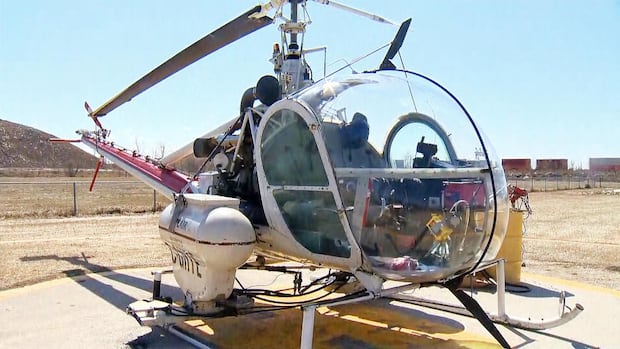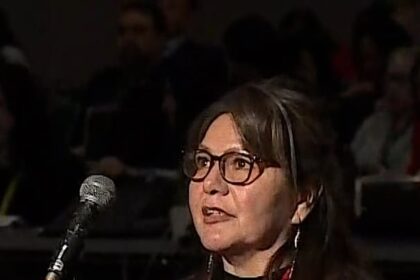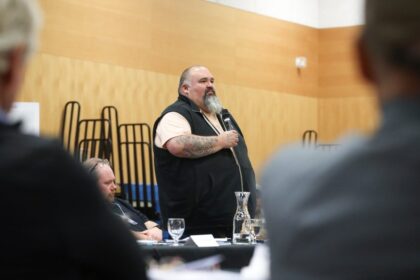ManitobaMore frequent larviciding could allow the City of Winnipeg to never fog for adult mosquitoes again, the city’s insect control branch says in a new report — but this increased level of insect control would require a new or expanded helicopter base.City 2-3 years away from depleting stockpile of sole remaining pesticide approved for foggingBartley Kives · CBC News · Posted: Sep 02, 2025 8:30 PM EDT | Last Updated: 5 hours agoWinnipeg would need to expand its insect control heliport in order to larvicide more frequently, something it may have to do once it tuns out of deltamethrin, the last remaining pesticide approved to fog for adult mosquitoes. (Global News pool cam)More frequent larviciding could allow the City of Winnipeg to never fog for adult mosquitoes again, the city’s insect control branch says in a new report — but this increased level of insect control would require a new or expanded helicopter base.The city is two to three years away from running out of its dwindling stockpile of deltamethrin, the last pesticide approved for use in Canada as a mosquito fogging agent. The insect control branch has 4,629 litres of deltamethrin left in its stockpile.In a report to city council’s community services committee, insect control superintendent David Wade outlined several ways the city can prepare for a near future when it no longer has the option to fog. “Changes need to be made now to prepare for this possibility,” Wade wrote.One of them would be to increase the amount of money the city sets aside in a mosquito-control reserve to $5 million from $3 million, allowing increased larviciding on demand.Another would be to increase the frequency of larviciding to the point where insect-control crews could apply the chemicals to low-lying areas of the city on a weekly basis instead of once every 10 days. At this frequency, mosquito larvae would never get the chance to mature into adults.This change would add $850,000 a year to the insect control branch’s annual budget, which stands at just under $10 million this year, Wade wrote.A third option would be to use less of the bacterial agent BTI to kill mosquito larvae and more of a pesticide called methoprene, a move that would cost an additional $600,000 a year, according to the report.Increased staffing and larviciding, however, would require the insect control branch to replace or expand its existing helicopter base on Grey Street in Elmwood at a cost of almost $14 million.”Increased service levels require increased room for staff and helicopter services,” Wade wrote, adding staff at the existing base have to use portable washrooms and change trailers.The new base would replace several existing buildings with a two-storey building and a maintenance garage. It would also expand the heliport’s landing pads to allow more aircraft to take off and land, Wade wrote.A new helicopter base is not listed as a pressing infrastructure need in the city budget. A spokesperson for Winnipeg Mayor Scott Gillingham said in a statement that he has yet to read the report. Coun. Vivian Santos, who chairs council’s community services committee, did not respond to requests for comment prior to publication.In his report, Wade also suggested the city could control mosquito populations in the future by improving drainage in order to limit “how much and how long storm water runoff lays stagnant.”A plan to conduct this work would cost $200,000, Wade wrote.He was not available to conduct an interview on Tuesday.With files from Cameron MacLean
Monday, 22 Dec 2025
Canada – The Illusion
Search
Have an existing account?
Sign In
© 2022 Foxiz News Network. Ruby Design Company. All Rights Reserved.
You May also Like
- More News:
- history
- Standing Bear Network
- John Gonzalez
- ᐊᔭᐦᑊ ayahp — It happened
- Creation
- Beneath the Water
- Olympic gold medal
- Jim Thorpe
- type O blood
- the bringer of life
- Raven
- Wás’agi
- NoiseCat
- 'Sugarcane'
- The rivers still sing
- ᑲᓂᐸᐏᐟ ᒪᐢᑿ
- ᐅᑳᐤ okâw — We remember
- ᐊᓂᓈᐯᐃᐧᐣ aninâpêwin — Truth
- This is what it means to be human.
- Nokoma










